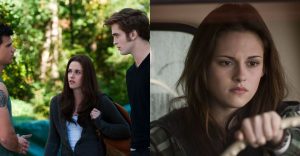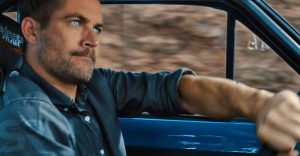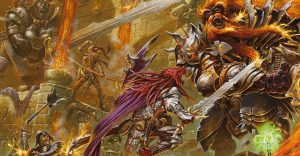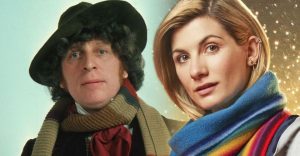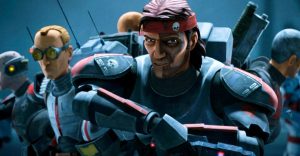15 Worst Moments of Product Placement in Movies

This is not just a list of classic product placement, whereby corporations pay to have their wares shown in a film. This list has sought to find movies that had corporate branding in their names and even products as characters themselves. In some cases, businesses didn’t even shell out money for the placement, but instead provided other kinds of support, or acquiesced happily to a bit of free advertising. Whatever the case, this list hopes to show a spectrum of what can be done in the field sometimes called, euphemistically, “embedded marketing” or “brand integration.”
And we wanted to leave off parodies of product placement. Wayne’s World no doubt raised the “brand awareness” of Pizza Hut, but the pandering commercialism was in itself the joke. We wanted to provide readers with some of the most egregious examples of real in-movie marketing. Some of the examples included will come as a surprise because of their family-friendliness, while others (we’re looking at you, Jack and Jill) will seem perfectly at home on the dubious list.
Please sit back, put your feet up, pour yourself a nice cold Coca-Cola, tear open a bag of Orville Redenbacher’s Ultimate Butter popcorn, and enjoy Screen Rant’s 15 Worst Moments of Product Placement in Movies.
15 I, Robot (2004)
The concept Audi RSQ sports car appears on screen in I, Robot for almost nine minutes. It was the first time Audi had developed a car specifically with a Hollywood film in mind.
Product placement is usually relegated to the background in movies, but cars have the wonderful PR benefit of being something the hero gets into and drives around in. It protects and transports the hero from one place to another, and there are often whole scenes from inside cars. We, the audience, literally can’t not look at this piece of advertising.
Shoes don’t have the gravitas of cars, so I, Robot made sure to be pretty obvious when hocking Converse All Stars as the protagonist’s shoe of choice. Will Smith has a foot on a chair and laces them up, and the camera steals a lingering closeup. Then in a later scene, a sweet old grandmother figure exclaims, “What it that on your feet?” To which the never-rustled Smith hoists one leg up onto a chair and says, “Converse All Stars, vintage 2004,” providing an ad hoc explanation for why a character from the future is wearing shoe styles from the present day.
14 Jack and Jill (2011)
The protagonist in Jack and Jill is, conveniently, a marketing exec. So it’s not meant to send up warning signs when we see unbelievable amounts of product placement: It’s just another day at the office. The exec, Jack (Adam Sandler), at different points stands next to a tower of Pepto Bismol, makes very clear use of his Sony Vaio computers, sits in a movie theater drinking Coke products with his family, and in the end lands Al Pacino to rap and breakdance in a Dunkin’ Donuts commercial. All facts.
But the most egregious moment of all is when the film takes a break from being a movie to become a commercial for Royal Caribbean cruise-ships. Jack and his sister Jill go on a cruise, and their trip is preempted by a bona fide ad for the cruise company, replete with pretty people having fun, a look at the ship’s amenities, and helicopter shots of the enormous Allure of the Seas ship they filmed on. All this is followed up with Jill exclaiming, “This boat has everything!”
13 Sex and the City (2008)
“We’ve positioned this movie from the beginning as ‘the Superbowl for women’.” That’s what New Line Cinema’s marketing chief Chris Carlisle said in the months leading up to the release of Sex and the City, his phrase reminding us that the movie would be as much for the audience as it would be to sell the audience to lucky advertisers. And just like the Super Bowl, the scope of promotional partnerships, offshoot events, and special merchandise tie-ins is kind of mind-boggling.
Glaceau Vitaminwater renamed two of its flavors for their sponsorship of the film, and in turn the drinks and movie would share space on posters in supermarkets and on popcorn bags at AMC theaters. Mercedes-Benz provided cars for main characters and, in return, star Kim Cattrall helped introduce its new sport utility vehicle at a Detroit auto show. Fashion company Bag Borrow or Steal was mentioned in the dialogue of one scene, and they sold bags at their stores named after characters. Skyy vodka, Coty fragrances, and H. Stern jewelry were some of the other partners in this version of the “Super Bowl.”
12 E.T. the Extra-Terrestrial (1982)
Adjusting for inflation, E.T. had the fourth-highest-earning domestic release of all time. That means that the 1982 film was such a success that they could have featured dust in the background, and dust futures would have skyrocketed the next day.
It’s the lovable alien film that started them all. An alien spaceship visiting Earth accidentally leaves one of its crew behind when it leaves. The alien meets a 10-year-old named Elliott (Henry Thomas), who takes him in and hides him from prying neighbors and the authorities. The alien crafts a device to communicate with his race — “E.T. phone home” — but then becomes very ill. The boy must help his alien friend make it off Earth before any real trouble occurs.
At the film’s start, Young Elliott lures the small alien to his home, and eventually to a hiding place in his room, using handfuls of colorful Reese’s Pieces. This scene goes on for a few minutes, with the candies playing an integral role in the main characters’ bonding. Director Steven Spielberg had initially approached the Mars candy company to use M&M’s in the film, but when they turned him down he went to Hershey, who agreed to let him use the Pieces. It was one of the shrewdest PR decisions ever.
11 Cast Away (2000)
Cast Away is a survival-adventure drama about a Memphis-based FedEx exec who survives a plane crash in the Pacific Ocean and is left stranded on a deserted island. Tom Hanks and director Robert Zemeckis had previously joined forces to make Forrest Gump, and the huge success of that project meant that anyone who got on board with the pair’s second outing was making a blue-chip investment.
Perhaps that’s why FedEx was okay with the movie portraying one of their planes crashing. The company worked closely with the filmmakers over the course of the two-year production, providing access to vehicles, uniforms, and facilities around the globe, and there was even a bespoke marketing team that helped mold the brand’s on-screen image.
Hanks’s character Chuck is washed up on the island with little more than a few plane parts, some water-logged FedEx packages, and a Wilson volleyball. We see the FedEx logo countless times throughout the movie’s two-plus hours, as Chuck is doing various survival chores like making fire or sipping from a coconut, with the carrier’s packages stacked respectfully in a spot all their own.
And Wilson made out quite well here, too. After a hand injury, Chuck wipes some blood on the volleyball, which makes the shape of a face. He ends up personifying the volleyball, calling it Wilson and having many conversations with it in efforts to keep himself sane. The name Wilson is spoken and shouted countless times throughout the film.
10 Toy Story (1995)
A good argument could be made that Toy Story does not deserve to be on this list. It’s a movie about toys, and Mr. Potato Head and Etch-A-Sketch are integral characters that just so happened to already be real products. We love them, so what’s the problem?
Well, as far as the movie goes, nothing. It’s one of the best family films ever, a warmhearted, animated tour de force. A boy moves away with his family, leaving a box of toys he’s outgrown back at the old house. The wily pack of toys are intent on staying together, and making their way back to their beloved owner. It’s a sweet and creative movie that never comes across as trying to sell the audience on anything.
But, thanks to Toy Story’s success, Mattel saw sales of Mr. Potato Head rise by 800%, and even more amazing, sales of the Etch-A-Sketch increased 4000%. Was the marketing intended? It may have been inadvertent, we may not want to know the answer. Regardless, Toy Story was PR paradise.
9 Little Nicky (2000)
Little Nicky was a fantasy comedy starring Adam Sandler, about the devil’s good son who comes to Earth to stop his wicked brothers from meddling with the human race. It’s a passable comedy, with Sandler employing yet another one of his nutty characters and requisite voices — this time it’s a cloying raspiness emanating from a contorted, golem-like face. The movie is infinitely more watchable thanks to a great supporting cast, which includes the wonderful Harvey Keitel, Patricia Arquette, Reese Witherspoon, and, uh, Quentin Tarantino.
But the movie has its dark side, too. As a new resident of Earth, Nicky discovers Popeyes Chicken, and falls in love with it immediately. In the first scene with the fried chicken, Nicky exclaims that Popeyes is delicious. This would be a serious enough offense, but it doesn’t come close to the second – and more dubious – brand reference. Nicky is tasked with trying to stop a group of robed demons from spreading evil, so he uses magical rainbows emitted from his hands to conjure for them an enormous bucket of Popeyes. One of the demons chews on a chicken leg and says right into the camera, “Popeye’s chicken is the shiznit!”
8 Mac and Me (1988)
It would seem at first glance that this is just an attempt to raise the brand awareness of another movie on this list, E.T. That’s because Mac and Me was one of many forgettable knock-offs of Steven Spielberg’s sci-fi spectacular. But actually, this movie is on here for one tangible, very gluttonous reason: McDonald’s.
A wheelchair-bound boy named Eric discovers a small alien that had holed itself away in his mother’s minivan. Eric attempts to hide the MAC (Mysterious Alien Creature) from the authorities and, in so doing, brings it to a birthday party happening at a McDonald’s. An impromptu but impeccably-choreographed dance number breaks out in the restaurant, with rows of colorfully-dressed kids, football players, and fast-food workers boogieing to a lively pop anthem. The scene is tonally unanticipated, but makes sure to include Ronald McDonald and sustained shots centering on The Golden Arches.
7 Jurassic World (2015)
There’s a kind of cute and memorable scene in Jurassic World where Claire (Bryce Dallas Howard) and her coworker Lowry (Jake Johnson), in the theme park’s control room, have a back-and-forth about corporate branding. Asked if she closed the deal with some business people she had just shown around, Claire says, “Looks like it. Verizon Wireless Presents the Indominus rex.” Lowery, crushed by the thought, returns, “Why not go the distance, Claire? Let these corporations name the dinosaurs.”
The problem is that nowhere else in the movie does it continue this self-effacing approach. It would have worked if the filmmakers had made up brands that were cutting parodies of real-life ones. But the rest of the film is chock-full of Beats by Dre, Verizon, and the big kahuna of the Jurassic franchise, Mercedes-Benz.
6 Foodfight! (2012)
The ad-centricity of Foodfight! would make Don Draper blush. When businessman-turned-director Lawrence Kasanoff got the idea to make an animated kids film about supermarket brand-names fighting off evil generic usurpers, he and his associates attempted to woo potential licensees with free product placement in return for movie promotion.
From concept to release, the production of Foodfight! took more than a decade. And when it was finally finished, the result was a rough-hewn mess, a thinly-veiled commercial for every major food company one could think of. Even a talented voice cast led by Charlie Sheen, Hilary Duff, Wayne Brady, and Eva Longoria couldn’t save it from fizzling out.
What was memorable about this venture was how blatantly the characters were named. Some of the more egregious examples include Vlad Chocool, Charlie Tuna, Lola Fruitola, Kung Tofu, Twinkleton, and Kaptain Krispy.
5 Transformers (2007)
It was difficult to decide which Michael Bay film most deserved a spot on this list. All of the director’s films are a lot like ads themselves: loud, flashy, purpose-built to grab viewers’ attention and ensnare them on an emotional level, while eschewing cinematic tropes like ambiguous narratives and complex characters. As well, most of them feature a lot of particularly blatant product placement.
Transformers won its spot because it was the first Bay film that took hold of the marketing dials and turned them all to eleven. The Transformers themselves, toys themselves long before the movie franchise existed, find themselves on screen emanating exclusively from GM cars and trucks. And just like the concept Audi of the future in I, Robot, all of the gleaming, muscular sports cars and pickups slot themselves seamlessly into their surroundings.
4 Man Of Steel (2013)
Remember Sears? It was a pretty popular retailer back in the ’90s. And Nokia. The Finnish phone company Nokia actually had some pretty neat and indestructible cellphones available for sale, and held a healthy chunk of the market, before the iPhone and the advent of the smartphone era.
Yes, Sears is still around. And Nokia still makes neat phones that are now pretty smart. But these brand names don’t come to mind very often these days. Which is likely why both sealed pretty extensive “brand awareness” deals with the makers of 2013’s Man of Steel.
But they were just the tip of the kryptonite iceberg. In fact, over 100 companies had product placement deals with the Superman film. From Budweiser to Ihop, and CNN to Nikon, this stampede of businesses wanting a piece of the soon-to-be blockbuster packed its coffers with over $160 million in proceeds — all before a single ticket went on sale. All that marketing moolah knocked off more than a fair share off the movie’s reported $225 million budget.
3 The Internship (2013)
Okay, so what better advertising is there than having an entire Hollywood movie predicated on the idea that where you work and what your company does is awesome?
That’s the takeaway from 2013’s The Internship, the movie that once again pairs frat-pack figureheads Owen Wilson and Vince Vaughn, as downsized salesmen who attain coveted summer intern spots at Google. Apparently the tech giant didn’t fund the film or any products in it, but it did have a hand in the screenplay. Sergey Brin has a cameo in it as well.
What made Wilson and Vaughn such anarchic fun in 2005’s Wedding Crashers is all but missing in this film, eight years on and with a warmed-over plot. The audience is left with little more than a two-hour corporate ad.
2 You’ve Got Mail (1998)
“You’ve got mail.” That’s the little phrase you’d often hear your computer chirp anytime you opened a web browser in the late ’90s. That’s because, more likely than not, you or someone you knew had America Online (AOL), one of the biggest Internet service providers at the time.
And AOL execs were there to help when director Nora Ephron and Warner Bros. decided to make another romantic comedy starring Sleepless in Seattle’s Tom Hanks and Meg Ryan. The web firm did not pay to have its products put in You’ve Got Mail, but it was influential in the production. Ephron evidently was just a huge fan of the Internet service, which, along with other features like web browsing, enabled users to chat with each other via email.
In the film, Hanks and Ryan are strangers who develop a budding relationship through chatting online. AOL assisted the filmmakers to make the email seem more realistic, and even convinced Ephron to change the movie’s title from its original “You Have Mail” into the corporation’s exact catchphrase.
1 The Entire James Bond Franchise (1962 – Present)
As a sort of microcosm of the modern movie industry, the James Bond films have consistently found new ways to employ product placement. We decided to include the whole franchise on this list because the habit of ‘brand integration’ is systemic for 007. If you think about it, the universe that Bond inhabits is ripe for promotion. The character is assertive, decisive, and he takes what he wants; it’s an old archetype that still triggers our curiosity after so many years. And part of his identity is that of a consumer, a hunter. It’s in his nature to seduce (and destroy) people, break into buildings, employ new-fangled gadgets, and drive really fast.
This all makes for a mountain of opportunity for advertisers. Car makers have made out especially well in this respect. The most famous Bondmobile of all is the Aston Martin DB5, an early-sixties grand tourer that became world-renowned thanks to its glamorous appearances in eight of the films. Other car companies that have lent cars to 007 include most notably BMW, Ford, Jaguar, and Lotus.
Non-rolling products also have a part in Bond films. In the most recent films, there are many brand references to beverage companies like Belvedere and Smirnoff, gadget suppliers like Sony, and watchmakers Rolex and Omega. And getting into a Bond film isn’t cheap: It’s been reported that Heineken paid $45 million (!) to have its beer be the secret agent’s tipple of choice in 2012’s Skyfall.
–
Well, did we miss any? What’s the worst product placement you’ve ever seen?











